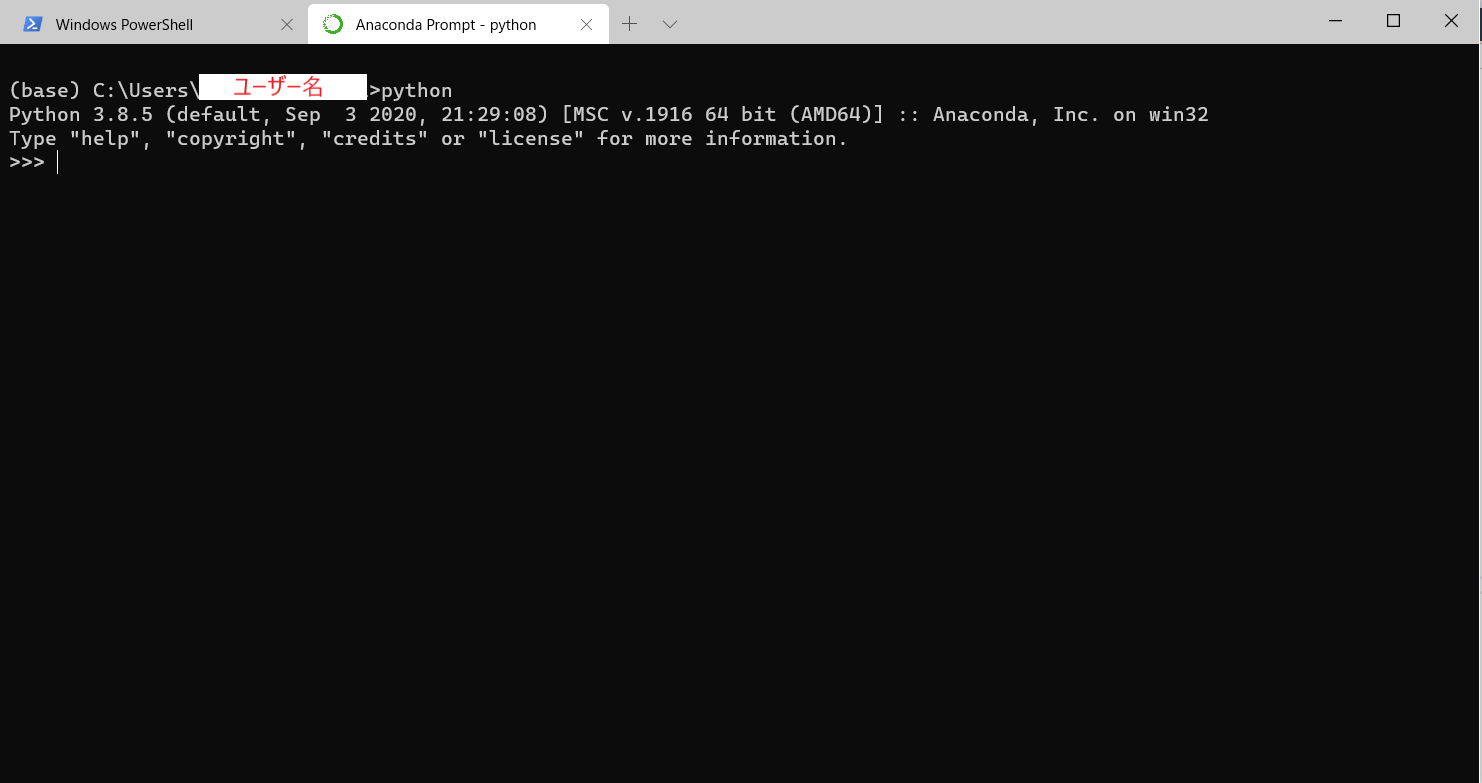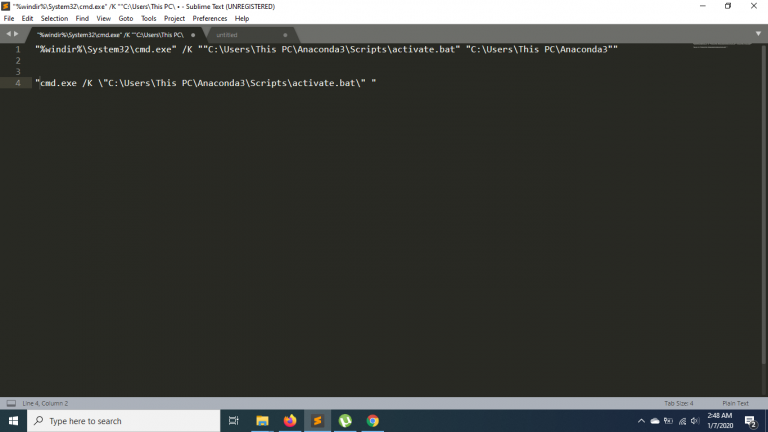

- #Windows terminal add anaconda prompt install#
- #Windows terminal add anaconda prompt code#
- #Windows terminal add anaconda prompt download#
- #Windows terminal add anaconda prompt windows#
Therefore they'll open in some default JSON editor (VS Code in my case). The settings don't have any GUI yet, it's just a JSON file you can modify. In short, they are preconfigured different ways of launching command line, terminal or whatever you call it.Īfter installing and launching the terminal, go to its settings by clicking an arrow on the tab bar: The thing which is interesting for us right now is its concept of profiles. I won't describe all its features here, but you should definitely check it out.
#Windows terminal add anaconda prompt windows#
However, it can be partially solved with the new Windows Terminal. conda commands won't work there, only in its special prompt. The minor issue with conda is its interoperability with your typical command line or PowerShell. Check out the docs or cheatsheet to dive deeper.What's even better, it can be used only there, the base environment is not cluttered. Now, if you run Python inside the superNewEnv environment you'll be able to use SciPy.You can always see your active environment at the beginning of the prompt (like that base at the beginning). To activate an environment: conda activate superNewEnv.
#Windows terminal add anaconda prompt install#
To install SciPy in this environement: conda install -name superNewEnv scipy.To create a new "superNewEnv" environment: conda create -name superNewEnv.To check, what packages are installed in that environment: conda list.That (base) prefix indicates that you're currently using base (default) conda environment. A terminal window should appear with something like (base) D:\Desktop>.
#Windows terminal add anaconda prompt download#
Download proper installer and install miniconda (when in doubt, choose the recommended options).Here's a super-short miniconda quickstart You can still download some packages using conda, but probably you won't have to if you are just starting and using some common ones. anaconda is similar to miniconda, but the collection of the pre-installed packages is much bigger.If you want to have other packages, you'll need to download them individually with conda To make it as small as possible, it contains only conda + its dependencies. miniconda is already pre-built and pre-configured collection of the packages.It facilitates installation & management of different packages Something like apt-get, chocolatey or brand new winget. conda is just a package management system.

When you'll start looking for some "conda installation guide" you'll immediately face the problem of those 3. What makes it even better is its popularity and community support. Creators of conda have already solved the problem! It enables you to do the exact things described above - create individual, isolated environments with different packages or even whole different Python interpreters. Sounds nice, isn't it?įortunately, you don't have to create some fancy bash/PowerShell scripts by hand to do this. Then you can just switch/activate one of them when you need it. For example you can have an "Convolutional Neural Networks Environment" with a Tensorflow + OpenCV and "Data Analysis Environment" with Pandas + Matplotlib.

With such an approach you can just switch between different 'environments' when you need it. Probably on of the first solutions which comes to mind is having some sort of 'environments' for different modules/interpreters. Not to search very far, some projects still require Python 2.X to run, while the other work only with Python 3.X. Do not wrap in quotation marks.If you code in Python you've probably encountered the problem of different dependencies required in different projects. Indicates Python will be registered as the system's default. RegisterPython=-Make this the system's defaultĠ indicates Python won't be registered as the system's default.

The following optional arguments are supported: To run the the Windows installer for Miniconda inĪrgument. You can still add Anaconda to the PATH environment variable during a Just Me installation. This was done to address a security exploit. As of Anaconda Distribution 2022.05 and Miniconda 4.12.0, the option to add Anaconda to the PATH environment variable during an All Users installation has been disabled.


 0 kommentar(er)
0 kommentar(er)
